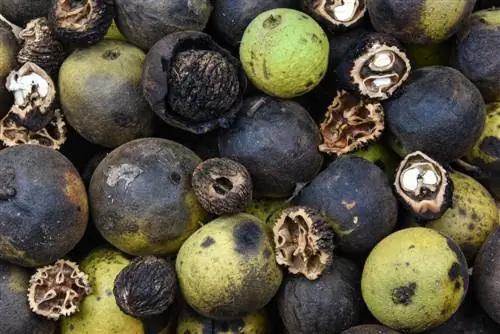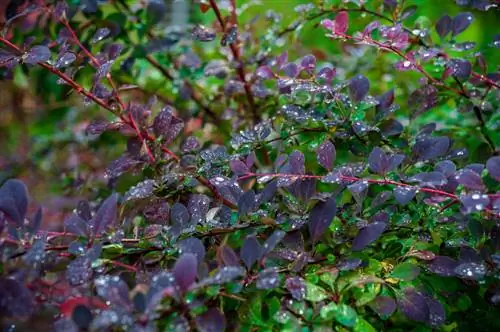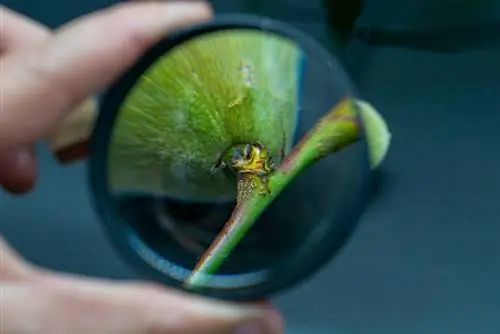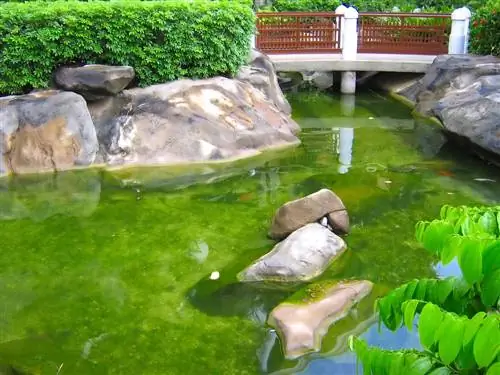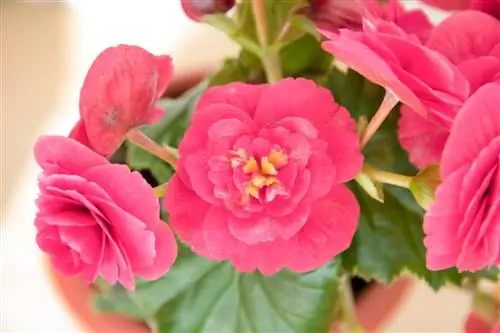- Author admin [email protected].
- Public 2023-12-16 16:46.
- Last modified 2025-01-23 11:21.
The walnut fruit fly is one of the most important animal pests of nuts in general and walnuts in particular. Infected fruits turn black - and the nut core is sometimes damaged. In fact, the walnut fly can also result in serious crop failure.

How can you prevent and control walnut flies?
The walnut fruit fly is a pest that attacks walnuts, making their flesh soft, black and slimy. Prevention and control include destroying infected fruit, covering the ground under the tree and setting up yellow boards starting in July.
The walnut fruit fly briefly introduced
The walnut fruit fly is a fruit fly (formerly Trypetidae, now Tephritidae) within the large group of flies. In terms of appearance and lifestyle, it is similar to the European cherry fruit fly (Rhagoletis cerasi), of which it is a relative.
Here is a short visual portrait of the walnut fruit fly:
Color: orange-brown
Size: 4 to 8 mmSpecial features: striking wing markings (black bands), yellow dorsal label
The walnut fruit fly only produces one generation per year. The pupae overwinter in the ground. The adult flies hatch from the end of June. The insects' main flight season only covers the month of July, although they are sometimes still on the move until September.
Larvae as a threat
The walnut fruit fly lays its eggs in the green fruit shell of the walnut. The whitish-yellow larvae live there and feed on the pulp, which subsequently becomes soft, black and slimy.
Note: There can be over 25 larvae in a single walnut fruit shell!
After three to five weeks of feeding, the fly larvae drop out of the nut (or fall to the ground with it). They then bury themselves in the ground, where they pupate and form the new generation of flies the next year.
Symptoms of a walnut fruit fly infestation
As already mentioned, the pulp is destroyed by the feeding activity of the larvae
- soft,
- black and
- slimy.
When you open the fruit peel you will find the bright larvae in the pulp.
Note: If the infestation is very severe, the nut kernel is often affected, making the walnut inedible.
Caution: risk of confusion
Fungal infections such as Marssonina disease and bacterial walnut blight also result in black fruit peels on the outside. This means that the discoloration alone does not mean that an infestation with the walnut fly must undoubtedly be the cause.
Prevent and combat walnut fruit flies
- Destroy infected fruits immediately. But: Do not dispose of it in the compost, but burn it or dispose of it as hazardous waste (otherwise risk of infection).
- Cover the ground under your walnut tree before fruit fall and also in spring/summer (from the end of June). In this way you prevent pupation or overwintering in the ground and also prevent the flies from hatching or flying out.
- Set up yellow panels (€5.00 on Amazon) from July onwards to catch some of the adult flies.

